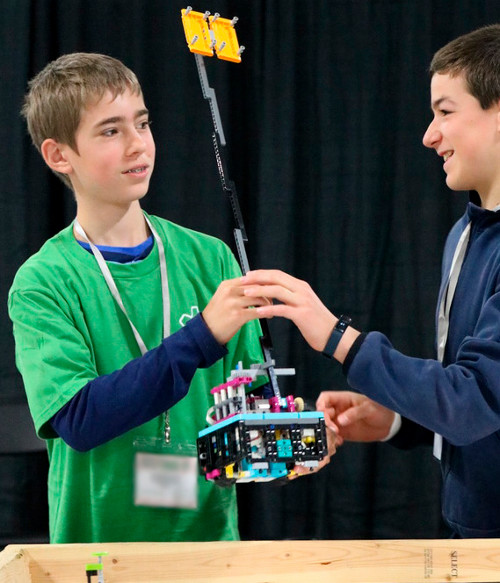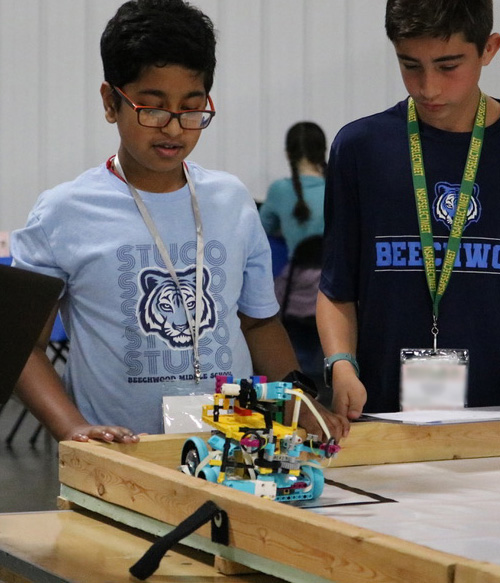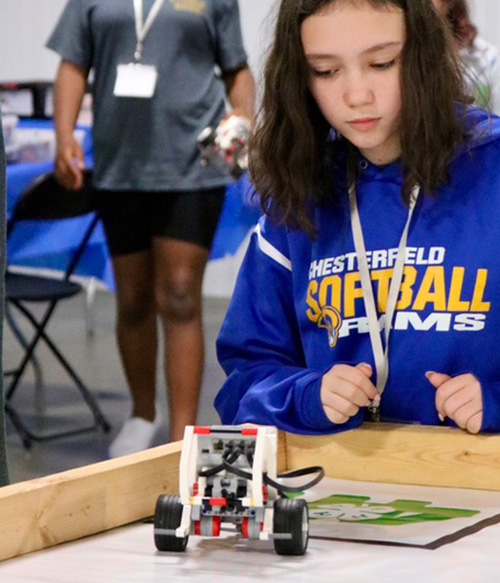About the Lego Robotics Challenge
Join us for the Lego Robotics Challenge! Teams from across the state are invited to show off their Lego robotic programming and design skills.


Challenge Objectives
-
Youth learn the basics of programming and design skills.
-
Youth communicate effectively and contribute to the group effort.
-
Youth demonstrate their knowledge.
Challenge Rules
Teams of 2-4 youth
Each team participating must have a minimum of two and a maximum of four youth to be eligible to compete. Parents, volunteers, and coaches may assist their team during the initial set up period. Additionally, each team will receive one technical assistance pass that can be used to receive guidance for technical problems (connection issues, computer failure, etc.), but not challenge strategy. Otherwise, parents, volunteers, and coaches are not allowed on the competition floor and must remain in the spectator viewing area.
Age Divisions | Junior (9-13 years) | Senior (14-18 years)
Age is calculated as of January 1, 2025. In teams with youth of multiple age divisions, the age of the oldest youth on that team will determine the age division in which the team will compete.
Materials | Specifications | Time
Teams may use any Lego branded robot, the most common options being NXT, EV3, and Lego Spike. Teams will need to provide all robot supplies, including batteries and extension cords, internet service if needed, and their device for programming. Teams will work together to program their robot to complete challenge missions on the competition table. Points will be awarded based on robot design and programming, teamwork, and table score.
-
Robots can arrive pre-assembled using any building plan design desired, and the team will need to be able to show the plan they used for their base build to the event judge. Recommendations can be provided upon request, but the base robot in the manual for the chosen robot set is suggested.
-
Teams may choose to arrive with a disassembled robot without providing the plans used to build at the start of the event, but all teams will have the same amount of time to work with their robot regardless of whether they start with an assembled or disassembled bot.
-
The challenge will be set up on a 93”x45” table, the same size as used in First Lego League competitions.
-
Table score will be based on a series of basic tasks with the robot starting from and returning to a “base” area and interacting with a series of manipulative missions or tasks. Examples include delivering a model to a specific area on the table, retrieving a model from a specific area, and successfully bringing it back into the “base” area. Points will be awarded based on the level of difficulty set for each task and if completed within the specified amount of time. The challenge tasks and scoring values will be released to teams on competition day, and will have a maximum point value of 100.
-
Prior to the table runs, each team will have two minutes to introduce their team, present their robot, and share why their chosen design was used.
-
Each team will have a three-minute round on the competition table. Following their table run, each team will have one minute to reflect on their performance and share challenges, successes, and improvements they would make.
-
All teams will stop their building and programming phases together and be present for the table runs of each of the other teams. It is a competition, but we are also there to support and respect each other.
-
The robot design and programming must be the work of the team members. Adult coaches and mentors should refrain from directing the team’s programming decisions or prompting the students during the competition events.
Judging
Metric | Placing
Teams will be judged on the robot design and successful programming, teamwork, and score on the competition table. The overall winner will be the team that scores highest in all three aspects and separate awards will be given for the highest score in each of the three individual categories. Rubrics and tiebreaker information will be provided upon arrival.



